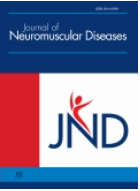 Spinal muscular atrophy (SMA) is the second most common neuromuscular disorder in children and adults. There are 4 types (from I to IV) depending on the age of onset of symptoms and the maximum functional abilities reached. Most of the adult patients are aging patients from type II or III SMA, they rarely are type IV or I. The recent use of innovative therapies resulting from the knowledge of the SMN1 gene has come up against, in particular among adult patients, to the new challenges of establishing relevant criteria.
Spinal muscular atrophy (SMA) is the second most common neuromuscular disorder in children and adults. There are 4 types (from I to IV) depending on the age of onset of symptoms and the maximum functional abilities reached. Most of the adult patients are aging patients from type II or III SMA, they rarely are type IV or I. The recent use of innovative therapies resulting from the knowledge of the SMN1 gene has come up against, in particular among adult patients, to the new challenges of establishing relevant criteria.
An article published in June 2020 reports the debates and conclusions of a workshop that brought together international specialists from the SMA on this topic. If treatment with antisense oligonucleotides (nusinersen) seems to have a real impact in children, its effectiveness is, for lack of robust data from real clinical trials, more questionable in adults. The centres involved in the management of this latter population, however, report improvements, admittedly limited and rarely spectacular, in some patients, but the functional benefit of which may be real and significant for the patient. The authors also insist on the need to develop, for this age group, new tools to assess this potentially beneficit. The issue of stopping treatment and its modalities was also widely discussed during this workshop.
